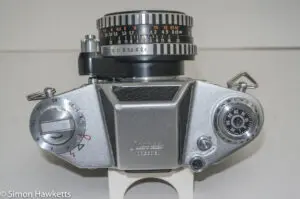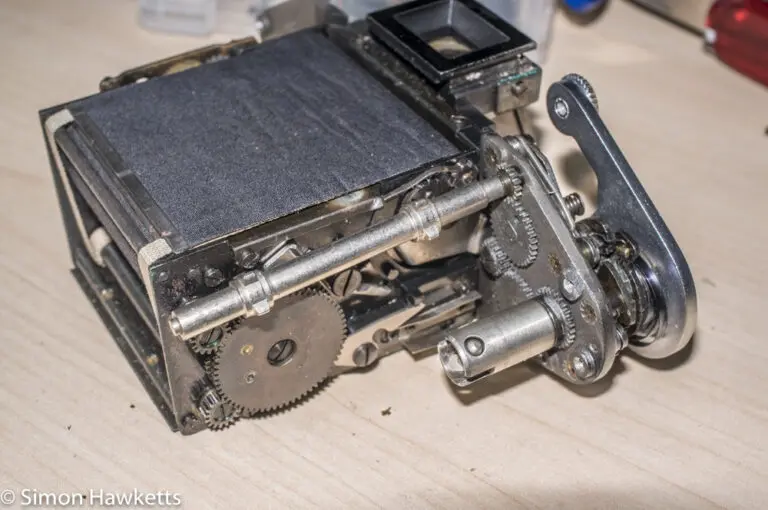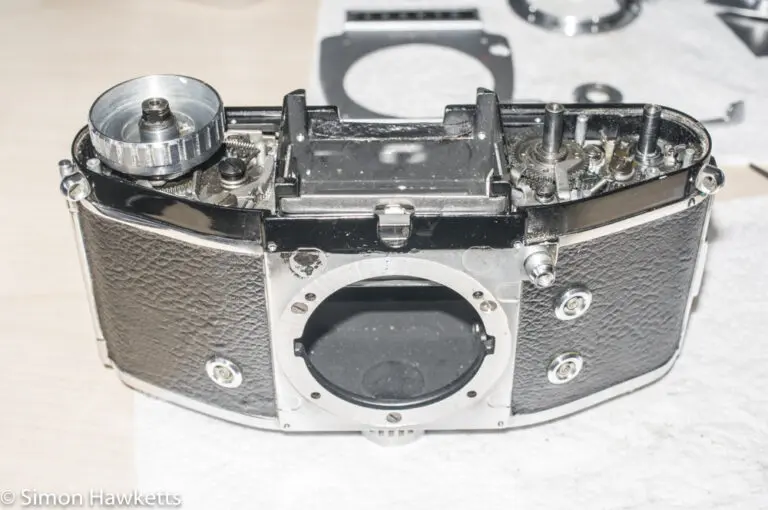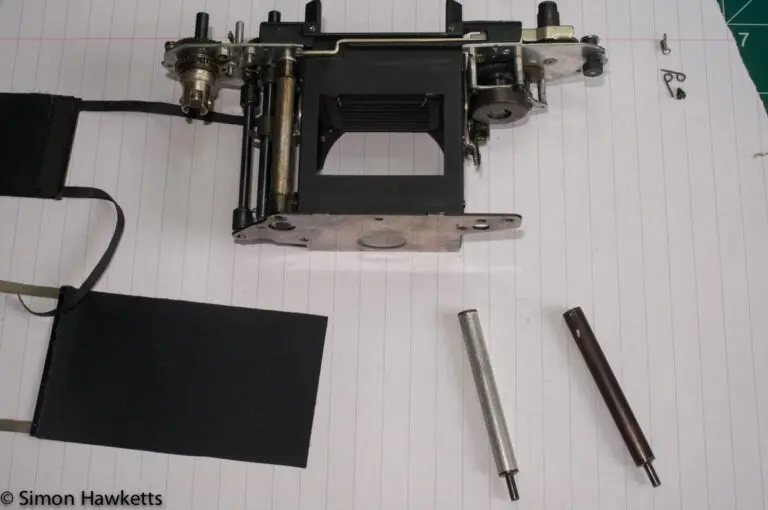Exakta Exa II 35 mm SLR camera
The Exakta Exa II was a camera made by the East German Ihagee camera company in the early part of the 1960s. It is a simple camera, with a non-return mirror and limited range of shutter speeds, and has the characteristic rounded body shape of the Exa series.
Exakta Exa II Images
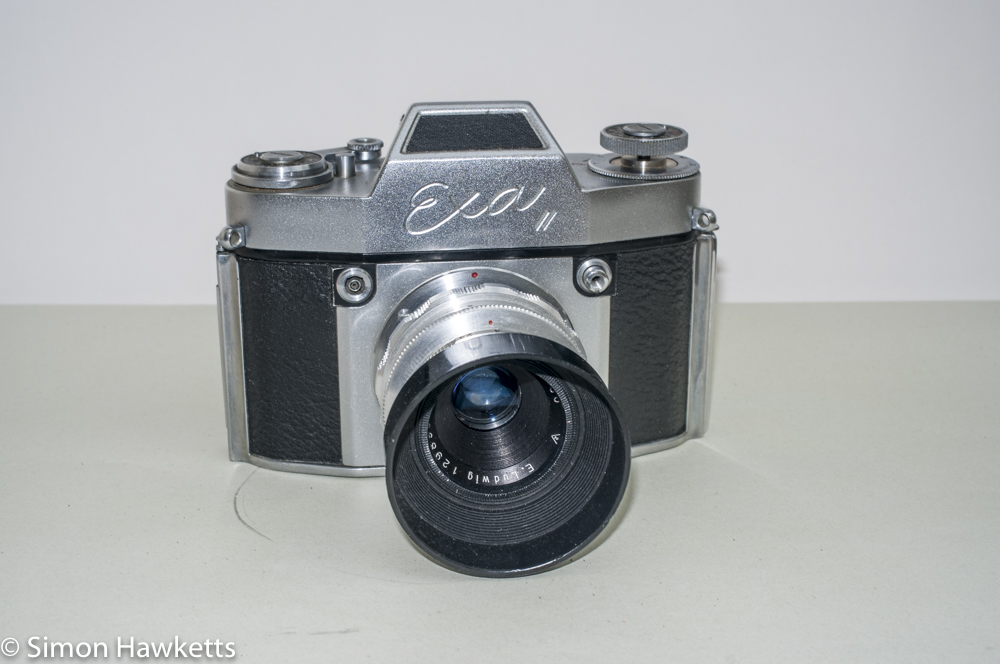

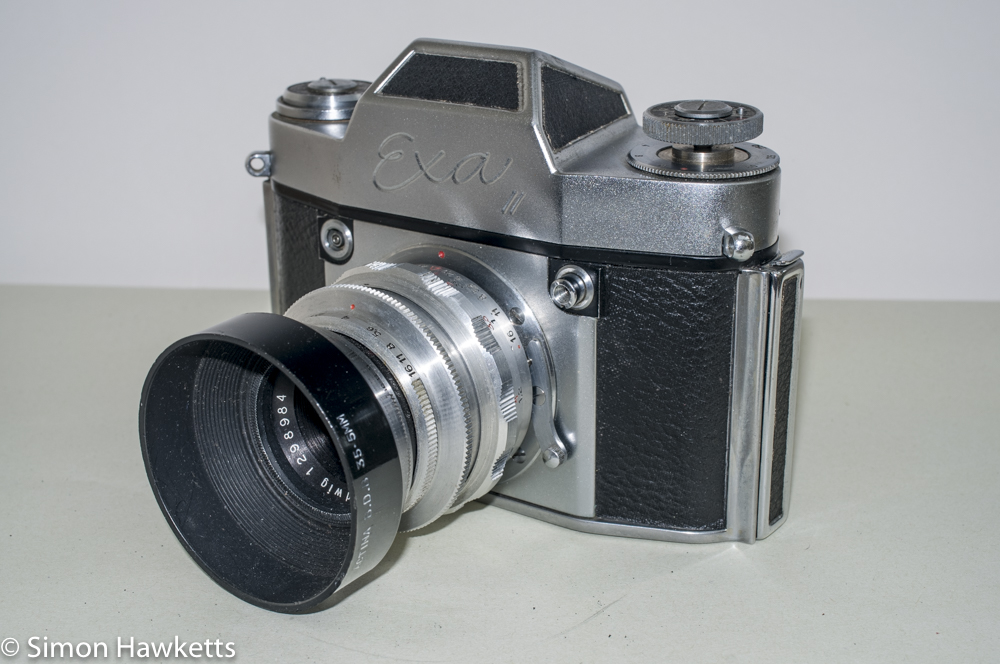
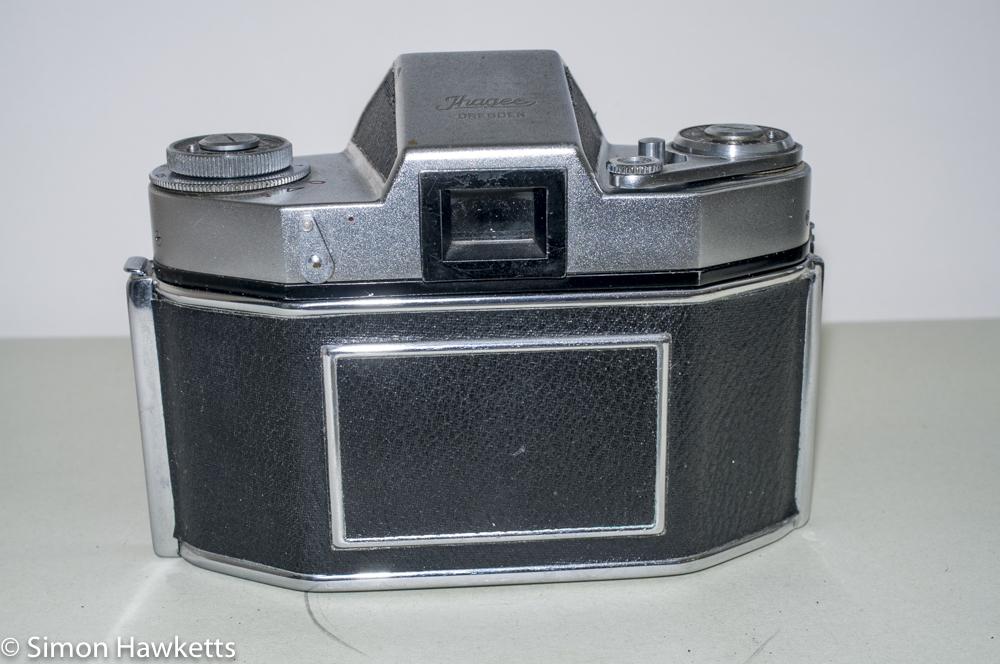
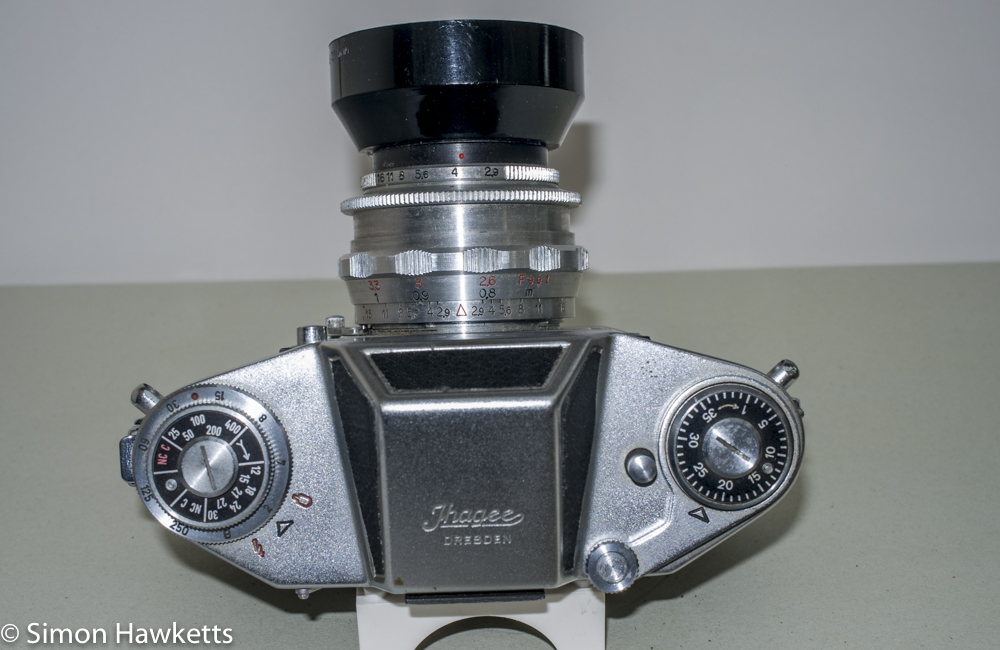
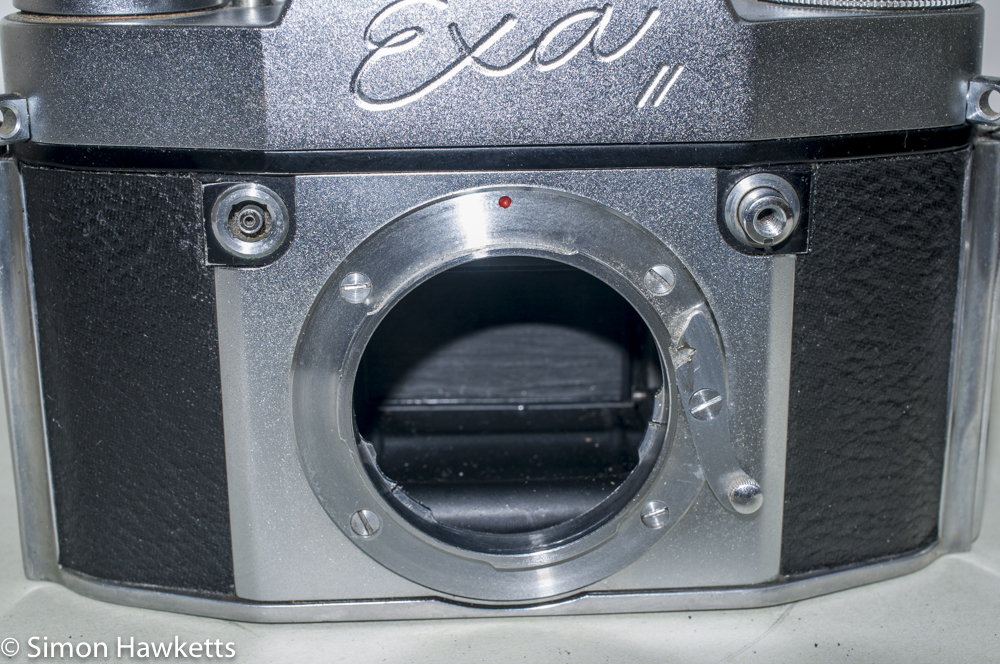
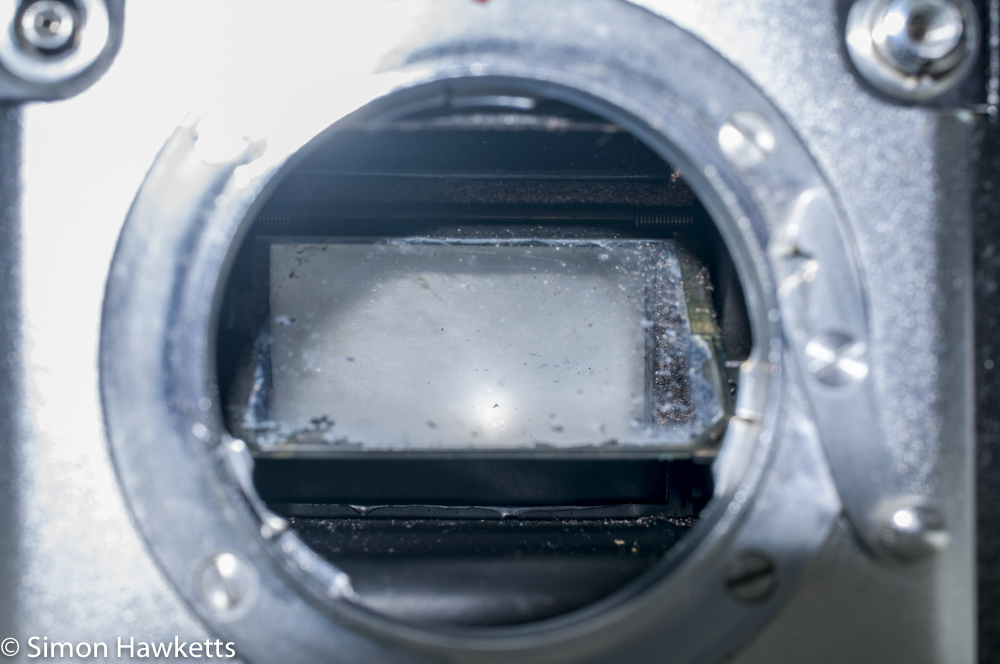
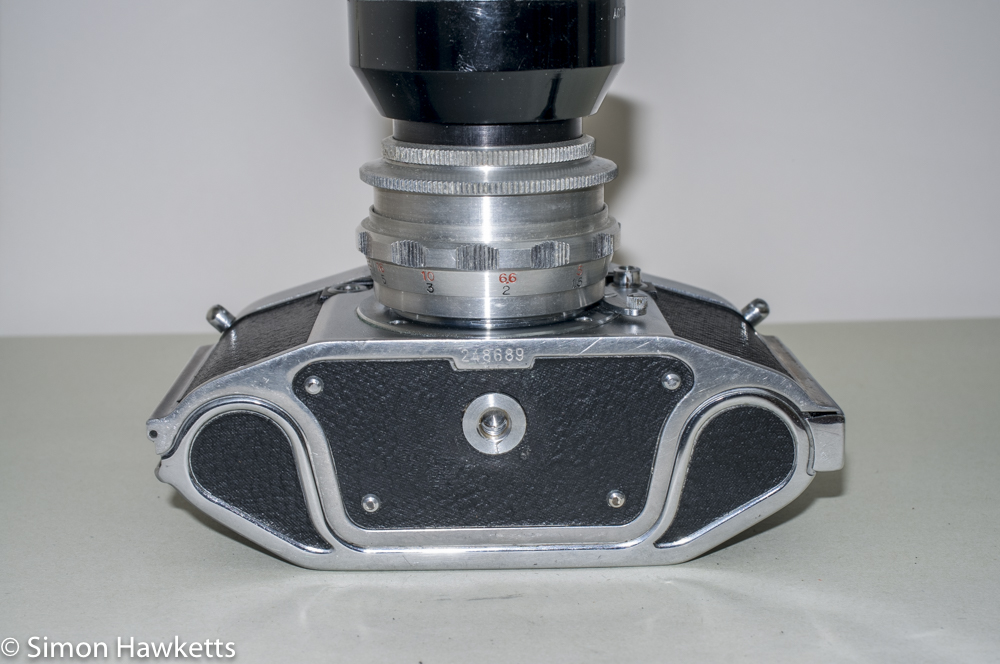
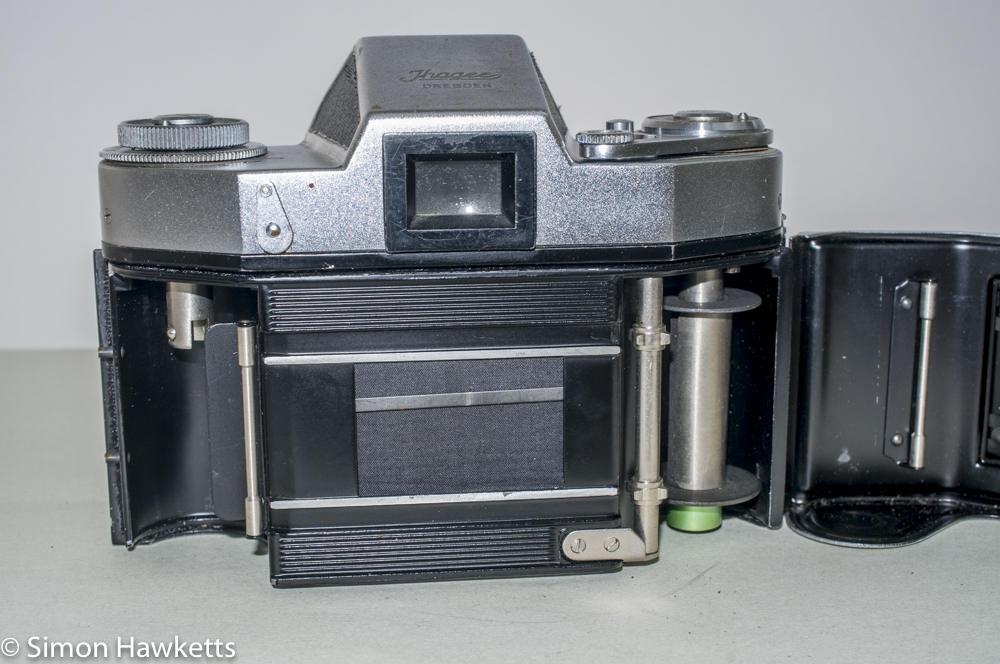

My Exakta Exa II Camera
My camera is in quite good cosmetic condition considering it’s age, but has a mechanical problem with the shutter.
Unfortunately, the first curtain is sluggish, and doesn’t always complete its travel up the frame (it’s a vertical travel shutter) at most shutter speeds. Until I get the camera apart, I can’t be sure what the problem is, but since it is travelling some way up the frame, I’m inclined to think it is probably dirt and old grease clogging the mechanism.
The mirror has quite a bit of dirt on, which I may be able to clean off, and some areas where the silvering has faded. My experience of cleaning mirrors suggests it may be better to just leave it alone, however, because top slivered mirrors are easier to damage than to clean.
The only other thing which would need to be looked at before the camera could be used with a film would be the light seals, which are completely turned to dust – quite normal for a camera of this age.
Ekakta Exa II description
I have one other Exa model in my collection which had a very odd arrangement of a metal plate which formed the shutter, so I was glad to find that the Exa II has a much more conventional cloth focal plane shutter which runs vertically up the frame. This also gives the Exa II model a more comprehensive range of shutter speeds, covering 1/2 sec to 1/250 as well as a bulb position.
The shutter speeds are set using a dial on the top plate of the camera, which is fitted around the film rewind crank. As well as the speeds listed above, there is also a flash sync setting between the 1/15 and 1/30 setting. In order to sync with both electronic flash or flash bulbs, this setting is moved to coincide with the appropriate symbol marked on the camera top plate, which is an interesting departure from the usual convention of having a flash sync switch.
Unlike the Exa I, the viewfinder in the Exa II is a fixed eye level finder, although the mirror has the same non-return design. This means the shutter needs to be cocked in order to compose the picture because the mirror is only wound down to the viewing position by advancing the film and cocking the shutter.
When in this position, the viewfinder gives a reasonably large view of the scene, but of course typically for a camera of this age there is no additional information in the viewfinder and the viewfinder itself is just a plain ground glass screen without a split-level rangefinder. Interestingly, the handbook (linked below) shows a split rangefinder, so I think there were at lease two versions of the Exa II made and mine is the version without the split rangefinder.
The lens mount is the standard Exakta bayonet mount with a locking pin which engages with a latch on the outside of the mount. To release the lens, the latch is pulled out of the way using the lever shown in the pictures above. Although I bought the camera without a lens, for the photos above I’ve fitted a lens which would have been typical of the type of lens used when the camera was current – an E. Ludwig Meritar 50 mm f/2.9 pre-set aperture lens. The alternative would have been a lens with a shutter release button fitted, which would have stopped the lens down as the picture was taken.
My next job is to remove the top cover of the camera and see if I can find out what the issue with the first shutter curtain is – once I get that sorted out, I will publish another post describing what I did to fix the problem.
Exakta Exa II specifications
- Exa II 35mm slr camera
- Focal plane shutter with speeds 1/2 sec to 1/250sec + bulb
- Film Type reminder
- Frame counter on film advance
- Front mounted shutter release
- Front mounted flash sync socket
- Exakta bayonet mount
- Non return mirror
- Top plate mounted film rewind button
- Shutter release lock
- Tripod bush
- Ser No: 248689
- Manual available on-line here.
Discover more from Everything Vintage
Subscribe to get the latest posts sent to your email.


